18 war movie battles, ranked by historical accuracy

In 1998, Steven Spielberg's Saving Private Ryan clambered onto the beaches and changed the war movie forever with its visceral, nerve-shredding battle sequence.
From that day forth, battles on film have been horribly realistic, with limbs torn off and blood splattered in all directions to remind us that war is indeed hell.
But realistic as it may be, is the battle scene from Saving Private Ryan – or Netflix's 2023 awards favourite All Quiet On the Western Front, for that matter – really historically accurate? And what makes a movie historically accurate? Is it real characters? Exact replicas of costumes and armaments? Or a faithful retelling of strategy and maneuvers?
Get ready for guts, glory, and an unholy amount of Mel Gibson as we look at 18 great battles depicted on screen, ranked by how historically accurate they are.
18. Braveheart – The Battle of Stirling Bridge (September 11, 1297)
The history: William Wallace and Andrew Moray hammered the English with some tactical genius in the First War of Scottish Independence.
The movie: Mel Gibson puts on a kilt (several centuries before it was fashionable) and shouts “Freedom!” until someone gives him an Oscar.
Battlefield report: With its face painted blue, Braveheart’s an easy target – everybody knows it Claymores historical fact into oblivion.

In reality, Wallace and Moray ambushed the English forces as they passed the narrow Stirling bridge. Using a schiltron formation, the Scots overwhelmed the troops that had already passed, and trapped the rest in a meander, driving them into the water. But in the film, the Scottish and English forces just, well, run at each other. There isn’t even a bridge.
“They’re running so fast into each other they hit and double somersault over the head,” says Tony Pollard, Professor of Conflict History and Archaeology at University of Glasgow. “That’s not how medieval battles would have been carried out. What you’d need is discipline and coordinated movements.”
Even Gibbo’s iconic battle gear is “absolute hokum.” “Both sides would have been dressed very similarly,” says Professor Pollard. “We have no evidence of tartan existing at the time and face paint is nonsense.”
17. The Last of the Mohicans – The Siege & Massacre at Fort William Henry (August 3-10, 1757)
The history: During the French and Indian War, 6,000 French soldiers and 2,000 Native Americans besieged a British fort. When the Brits surrendered for guaranteed safe passage, the Natives massacred them.
The film: Daniel Day Lewis’ adopted white Mohican “Hawkeye” gets involved and romances a British Colonel ’s daughter.
Battlefield report: The siege is done justice – a general bombarding with massive canons – but the massacre takes liberties. It skips the bit when the Natives plundered the fort to scalp the sick and wounded (ouch), and moves straight onto a forest ambush, which did happen, but it’s reimagined as a rousing, Oscar-worthy battle.
“It really was a one-sided attack, the British prisoners had no weapons,” says Dr David R. Starbuck, a historical archeologist at Plymouth State University.
Dr Starbuck also calls a scene in which a Huron warrior tears out the British colonel’s heart “absolutely ludicrous”. “Colonel Monro was in the French camp being wined and dined by the Marquis de Montcalm.”
Some the weapons are also dubious. “To have our hero running along, shooting his musket ‘from the hip’, would not enable him to hit the side of a barn,” says Dr Starbuck.
16. The Patriot – The Battle of Cowpens (January 17, 1781)
The history: A decisive clash between the British and Continental Army in the American War of Independence.
The movie: Mel Gibson’s up to his old tricks again, giving the American War of Independence the Braveheart treatment by sticking it to the English and rewriting history.
Battlefield report: The film – notorious for firing a canon up the backside of historical fact (including some offensive ret-conning of slavery) – wisely doesn’t name this battle.

But Mel Gibson’s character – an amalgamation of real-life revolutionaries, including Daniel Morgan and Francis Marion – instructs his militia replicate a real tactic from Cowpens: to shoot twice and retreat.
The resulting ambush in the movie is also (sort of) based on fact, as the British 71st Regiment – Scottish Highlanders – got a surprise when they tried to finish off the Continentals with an old school highland charge. “The Continentals turned faced and fired and the 71st was devastated,” says Professor Lawrence Babits, author of Cowpens book, Devil of a Whipping (and a re-enactment extra on the movie). “That’s sort of the ambush you see in the movie.”
According to Professor Babits, costumes and weaponry used were also “pretty close”.
15. Enemy at the Gates – Stalingrad (August 23, 1942 – February 2, 1943)
The history: The biggest, bloodiest battle of WW2. Germany’s attempt to capture Stalingrad reduced the industrial city to rubble and resulted in almost 2 million dead, captured, or wounded.
The movie: Russian and German snipers – played by Jude Law and Ed Harris – have a sharpshooting “duel” amongst the carnage.
Battlefield report: The film opts for a bit of Private Ryan-style realism in the opening minutes, as Red Army soldiers are ferried across the Volga River and shot to pieces en masse. That’s not entirely inaccurate – supplies and troops were ferried over the river. And some were sent without weapons, as shown in the film.
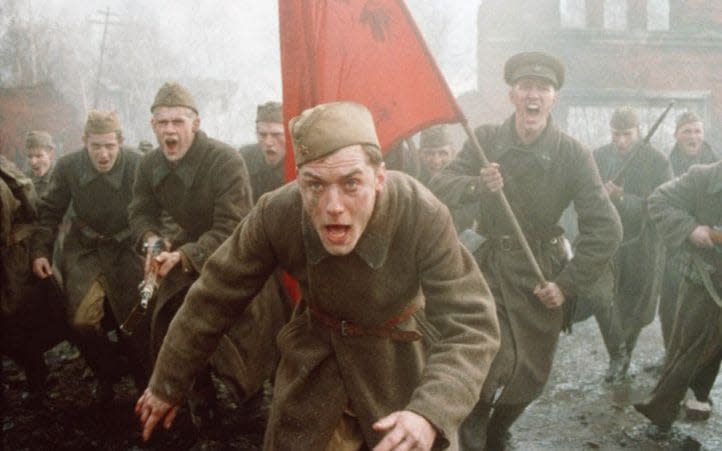
“That’s a widely reported within the Eastern Front,” says John Delaney, curator at the Imperial War Museum. “Units were sent into combat without training. It was like, ‘Here’s a uniform, get in it, off you go’. The hundreds of thousands of people the Soviet Union had allowed them to treat that resource in a cavalier fashion. If they got killed, there was always another 100,000.”
And while Law’s character Vasily Zaytsev was a real Russian sniper, his legendary duel is apocryphal – a crafty bit of propaganda to keep the Russian end up. But be fair: a film about Russians who have speak with received pronunciation has few documentarian aspirations.
14. Hacksaw Ridge – Battle of Okinawa (April 1 – June 22 1945)
The history: At the bloody battle for the island of Okinawa, which cost the lives of 80,000 US and Japanese soldiers, men from the 77th Infantry Division tried to take a fortified cliff (“Hacksaw Ridge”), where unarmed medic Desmond Doss saved the lives of 75 men.
The movie: Andrew Garfield plays Doss and Mel Gibson’s in the director’s chair, striking a balance between laughable sentiment and artery-spurting violence.
Battlefield report: The story of Desmond Doss is true. A conscientious objector because of his religious beliefs, he refused to carry a gun. After his unit retreated from the cliff, as depicted in the movie, Doss stayed in no man’s land, rescuing injured men and lowering then down the cliff for medical attention.
The action’s a bit too Hollywood – all blown off limbs, limbless torsos chucked around, and grenade juggling between enemies – and Gibbo omits one key fact because he though viewers would find it unbelievable (this coming from Braveheart): after the real Doss was injured by shrapnel, he gave up his stretcher to someone else and was promptly shot for his troubles.
And the ridge itself gets a Hollywood makeover. The real ridge is closer to 30ft high than the 100ft monstrosity used in the movie.
13. Dunkirk – The Dunkirk Evacuation (May 26 to June 4)
The history: The Allies attempted to rescue 400,000 soldiers, after advancing German forces trap them on the beaches of Dunkirk.
The movie: Mark Rylance ferries across the channel to pick up soldiers in his tiny boat. Tom Hardy shoots down Luftwaffe. And Christopher Nolan plays fast and loose with time. Not to mention a few facts.
Battlefield report: For a film that purports realism, there are plenty of factual errors to take aim at. As historian Andrew Roberts points out, Tom Hardy’s Spitfire fights at way-too-low altitudes, firing out five times as much ammo as he should have; the small civilian boats do most of the rescuing, rather than the 39 destroyers and cruiser that did it in real life; and French soldiers are refused a spot on the British ships, an irresponsible inaccuracy that belies the joint Anglo-French war effort.

But it’s all just about understandable for the sake of dramatic tension. “Overall, I enjoyed the movie” says Andrew, “but they did they really need to have Hardy fly around without any fuel for 15 minutes? A plane like that would drop out of the sky, it wouldn’t glide around shooting down bombers!”
12. Black Hawk Down – Battle of Mogadishu (October 3-4, 1993)
The history: A Task Force Ranger mission to capture two Somali warlords turned into a two-day firefight with militia. Two US helicopters were shot down, and 18 US soldiers and hundreds of Somalis killed.
The movie: Ridley Scott does 90 minutes-plus of non-stop shooting. Looks nice though.
Battlefield report: The violence is shamelessly cinematic – the jangly Ayatollah music that plays as a sunglasses-clad, bazooka-wielding villain shoots down a chopper is a bit much – but for the most part, events play out mostly as they did in real life.
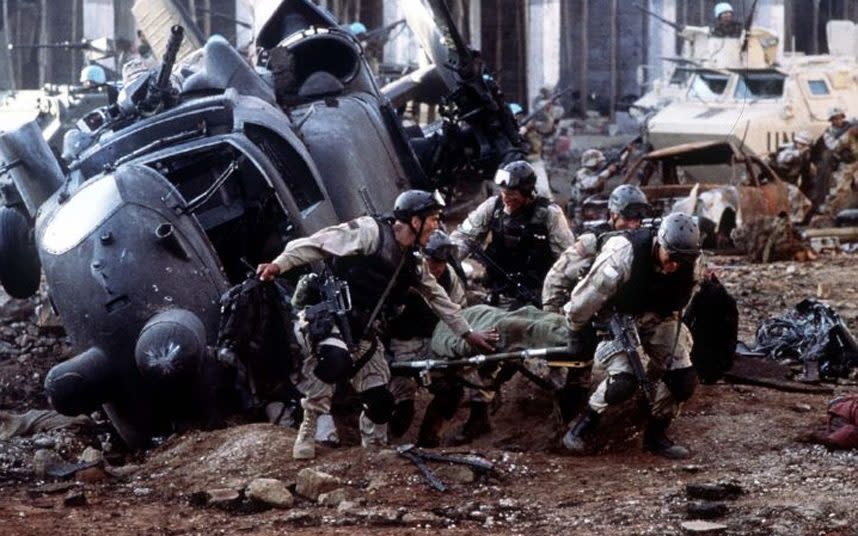
“I think it’s one of the best war movies ever made,” says Nick Hodges, creator and host of History Buffs YouTube channel. “It’s a relentless slog, but if you read the book by Mark Bowden, it’s very close to what he wrote.”
Black Hawk Down’s real problem is its perspective. The film was criticised for its ignorant portrayal of the Somalis as baddies, and Malaysian and Pakistani troops who were involved (and killed) in the subsequent rescue mission are cut out entirely.
Osman Ali Otto, one of the captured warlords, took umbrage with some details of his kidnap scene, but seemed mostly upset because he’d been portrayed wearing an earring.
11. Gallipoli – Charge at the Nek (August 7, 1915)
The history: Part of the Gallipoli campaign to take Constantinople in WWI, hundreds of Australians climbed from the trenches and charged into Ottoman machinegun-fire.
The movie: Mel Gibson (a young man here – long before he was Scottish) runs messages between the trenches and command. But when the orders are given to halt the push, he’s not fast enough, and his fellow soldiers are sent to their deaths.
Battlefield report: There are kernels of truth in this one. Lt Col Noel Brazier of the 10th Light Horse really did go between commanders to try and get the push cancelled. While miscommunication and dilly-dallying caused men to be senselessly massacred.
The film downplays the appalling conditions of the Anzac trenches – decomposing bodies, swarms of corpse flies, and widespread dysentery – and this is Mel Gibson’s first taste of fudging the facts at the expense of the British.
“In the film the British are sipping tea on the beach while sending Australians to their doom,” says historian Andrew Roberts. “You never have thought that more British people than Australians died at Gallipoli. His entire career has been built on being Anglophobic. I’m surprised he didn’t make Pontius Pilot into a moustache-twirling evil Englishman aristocrat in the Passion of the Christ.”
10. A Bridge Too Far – The Battle of Arnhem (September 17-25, 1945)
The history: “Operation Market Garden” was the Allies’ ill-fated plan to seize a series of bridges – via both an airborne and ground assault – for access into Germany’s industrial heartland, the Ruhr. Radios didn’t work, paratroopers dropped too far from the decisive Arnhem Bridge, units were separated, and the counter attack was too strong.
The movie: A blow-by-blow account with an all-star cast – Dirk Bogarde, Michael Caine, Gene Hackman, Robert Redford, Sean Connery, and Anthony Hopkins – playing real-life participants.
Battlefield report: We can get our britches in a twist all day about technicalities – the wrong tanks, the wrong types of parachutes, or wrong shades of green – but A Bridge Too Far deserves credit for recreating every disastrous stage of the assault.
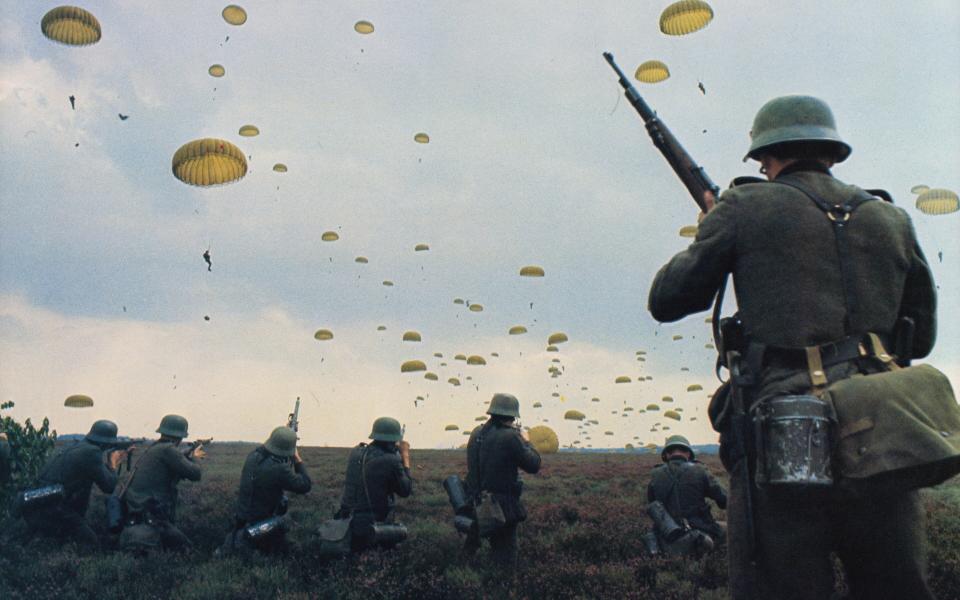
“It follows the build up and progress as far as it can over three hours,” says John Delaney from the Imperial War Museum, “it being a several-day operation involving several hundred thousand people.”
But the film’s biggest mistake is making it seem like Market Garden had a chance to begin with.
“If only the radios had worked, if only they’d dropped closer to the bridges,” says military historian Saul David. “All relevant points, but none of them would have made a material difference, because there were too many things wrong with the plan.”
9. We Were Soldiers – Battle at Ia Drang (November 14-18, 1965)
The history: A botched search and destroy mission led to 200 US troops defending a landing site (LZ X-Ray) against several thousand Vietnamese in 48 hours of continuous fighting. The first major conflict between US and North Vietnamese troops.
The film: Mel Gibson gives the English a break and plays the real-life Lt. Col Hal Moore, who led the 1st Battalion, 7th Cavalry. Based on the book by Moore and war reporter Joe Galloway, We Were Soldiers was an attempt by writer-director Randall Wallace get the facts right (big words from the man who wrote Braveheart and Pearl Harbor).
Battlefield report: The attention to detail is impressive: replica weapons, authentic costume, landscape, and even cigarette brands the real men smoked. One napalm-induced injury is gruesomely recreated with flesh melting authenticity.
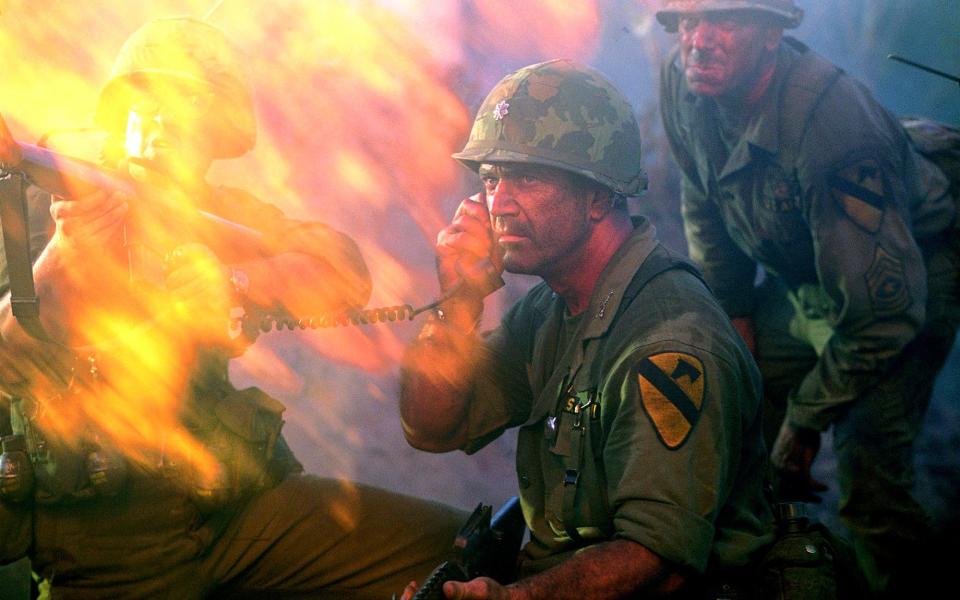
The events of the two-day battle are accurate, until the film shoots itself in the foot. Gibson’s men win the day by leading a bayonet charge – something that in truth hadn’t been done by US military since the Korean war. It was new-fangled firepower that really held back the Vietnamese.
But this film’s commitment to the truth is more about replicating the grit and moral ambiguities of Vietnam.
8. Alexander – The Battle of Gaugamela (October 1, 331BC)
The history: Though hugely outnumbered, Alexander the Great pulled off some inspired misdirection to smash Darius III and conquer the Persian Empire.
The movie: The ever-controversial Oliver Stone works his magic by hero-worshipping Alexander as a flaxen haired hunk (a blond Colin Farrell) and missing some key events. The burning of Persepolis, for instance, is skipped over.
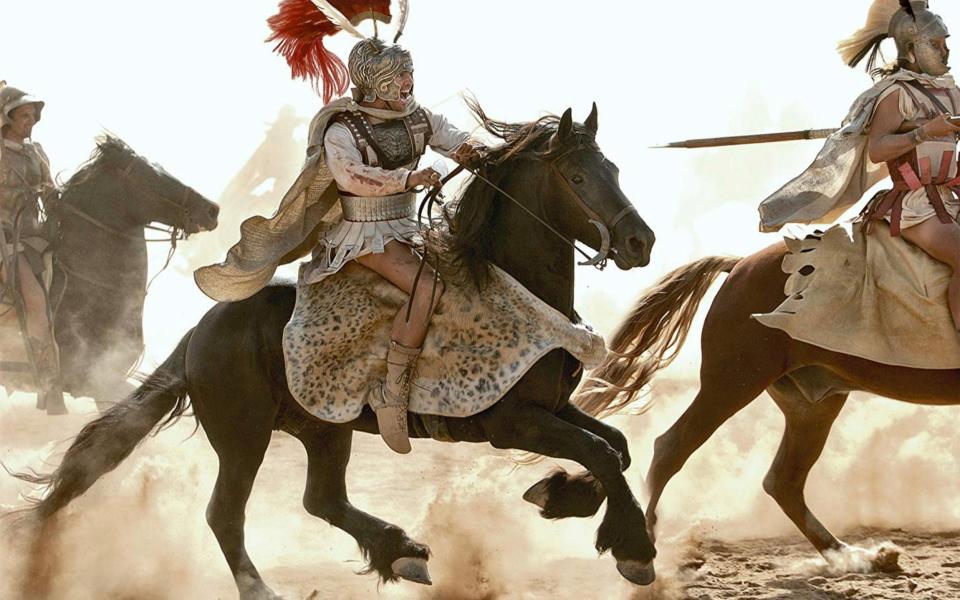
Battlefield report: Stone’s Alexander has been put to the sword by historians. Not necessarily for glaring missteps – though there are some – but for being a generally poor film. British historian Dan Snow, speaking to History Hit, said that Alexander might follow the sources too closely – making it a plodding slog of a historical epic.
But with foremost Alexander the Great historian Robin Lane Fox onside (quite literally: he appears as a extra in the battle), Oliver Stone recreates Gaugamela with impressive reality, including the Macedonian army’s 12-ft spears and battle gear (all except Farrell’s ostentatious lion’s head helmet, which is a bit of Hollywood set-dressing). Also, the dusty, almost-impossible-to-see desert conditions (in what is now Iraq) and Alexander’s strategic manoeuvres, such as creating openings within the phalanxes, into the Persian chariots could charge, only to find themselves surrounded. Also, Alexander’s ploy to lead Darius’s cavalry to the left, then switching direction and driving a wedge into the exposed centre of Darius’s forces. And as seen in the film, Darius did indeed scarper. As noted by Dan Snow, it loses marks for having no actual Persians.
7. All Quiet on the Western Front – Hundred Days Offensive (August-November 1918)
The history: A series of Allied attacks along the length of the Western Front, which drove the Imperial German Army out of occupied France and Germany.
The movie: War is indeed hell and even worse in Netflix’s awards-bayoneting epic. Based on the WWI novel by Erich Maria Remarque, it follows German enlistee Paul Bäumer (Felix Kammerer) to the Front, where he loses his friends one-by-one.

Battlefield report: Set against the backdrop of the Armistice negotiations, it presents a dramatised version of the Hundred Days Offensive fighting – mud, blood, flamethrowers, and carnage. Dr Jonathan Boff, history lecturer at the University of Birmingham and author of Winning and Losing on the Western Front, credits the film with getting some aspects right. “German deserters, the breakdown of discipline in the German army; hunger; the sheer scale of the violence and horrendous rate of casualties; the youth of some of the soldiers; the use of tanks, aeroplanes, etc,” says Boff. “But the way it represents the war as a series of bayonet charges across No Man's Land in the teeth of machine guns is a better representation of 1915 than of 1918.” Indeed, few films properly depict the advances in how fighting changed across WWI.
A barmy German general’s insistence on one last attack also has some basis in reality. “There were some last-minute attacks of the kind made by the mad German general,” says Boff. “There were some notorious American examples, although the Germans were generally too far gone to be pulling such stunts.”
For Boff, the film’s Hollywood-ised action detracts from the message of the original book – that the trauma of WWI extended way beyond the battlefield.
6. Saving Private Ryan – Omaha Beach (June 6, 1944)
The history: On the bloodiest beach of the Normandy Landings, troops from the US 1st and 29th Infantry Divisions struggled against heavy German defences.
The movie: Spielberg does D-Day. The rest of the plot – Tom Hanks’ unit rescuing Matt Damon’s Ryan – is sentimental fantasy.
Battlefield report: Just seconds into the battle – bullets slicing through soldiers before they’re even off the boat – and Private Ryan was already the most realistic war film ever made. But realistic doesn’t necessarily mean historically accurate.
If you can forgive a few erroneous details (as pointed out by Nick Hodges in History Buffs, those should be British coxswain steering C-Company to the beach, thank you very much, Uncle Sam) it portrays how troops became trapped at the seawall and used Bangalore torpedoes to blow out the bunkers – though some US troops were trapped there for hours, not the 15 minutes it takes Hanks and Co.
“It’s accurate for that unit on that bit of that beach on that day,” says John Delaney. “But you can’t say, ‘That’s what D-Day was like’, because it wasn’t. Omaha beach is about three and a half miles long. What’s happening at one end of the beach isn’t what’s happening at the other end.”
5. The Longest Day – Operation Overlord (June 6, 1944)
The history: D-Day again, but this time the whole bally show – 7,000 vessels, 1,200 planes, and 160,000 troops invading Nazi-occupied France.
The movie: John Wayne, Robert Mitchum, and Richard Burton lead the first star-studded three-hour epic, retelling the story of the landings step-by-step.
Battlefield report: Adapting the book by Cornelius Ryan, producer Darryl F. Zanuck was committed to historical accuracy, depicting real people, real conversations, and recreating the action as it happened (see the US Rangers climbing the cliffs under fire at Pointe du Hoc – terrifyingly real), with help from technical advisors who’d been there.
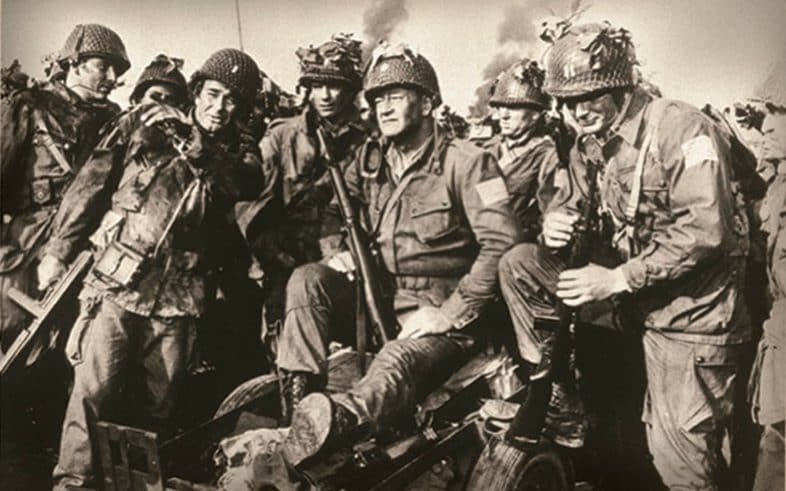
There are flagrant inaccuracies, and Robert Mitchum swanning up and down Omaha with no gun and a cigar in his hand – the same beach where Tom Hanks’ company are getting their intestines blown out – is a sign of a simpler time in filmmaking.
It doesn’t have the blood, guts, and severed limbs of Private Ryan, but as with other older war movies, there’s a proximity to the events that adds credibility.
“The rule is, the older the film the more accurate it is,” says Andrew Roberts. “They had historical advisors who’d actually been in the conflicts – in those days they listened to historical advisors. And the audience knew what had genuinely happened.”
4. Das Boot – The Battle of the Atlantic (1939-1945)
The history: U-boats hunted the cross-Atlantic convoys that delivered much-needed supplies from the US to Britain. Churchill and the British admiralty genuinely feared the highly-effective U-boats, which had major success during periods known as the “happy times”.
The movie: Wolfgang Petersen’s drawn-out, dank masterpiece is adapted from the Lothar-Günther Buchheim novel. Buchheim was a war correspondent who spent time on the real U-96, which he turned into a novel.

Battlefield report: Set in late 1941, it covers a relatively small part of the Battle of the Atlantic, but accurately portrays the tedium and stress experienced by U-boat crews. “They just went to sea and stayed there for days, weeks, even months without even seeing a ship or aircraft. Then all of a sudden they arrive into action,” says Dr Axel Niestlé, German naval historian and author of German U-Boat Losses During World War II. “This is one of the highlights of the film – it is completely realistic.”
Wolfgang Petersen, with U-boat veterans as advisors, went to painstaking lengths to recreate the technical specifications of the U-96. The film had to make some concessions to dramatic tension, such as scenes of the U-96’s rivets bursting after being hit by depth charges (“At that time the German U-boats were full welded,” says Niestlé) and the boat plunging to 280 metres (“at 280 meters the boat would have been done!”) It has an interesting relationship with historical accuracy – a fictionalised telling of Buchheim’s real experiences. But Niestlé credits the film for realistically portraying attacks witnessed by Buchheim. “To this day, it’s the best film about U-boats you can find,” he says. Unlike the film version, however, the real U-96 survived until March 1945.
3. Battle of Britain – Battle of Britain (July-October 1940)
The history: Hitler’s attempt at softening up Britain ahead of his planned invasion. The RAF repelled the attacks and hit the Germans with unsustainable losses.
The movie: Another ensemble epic that attempts true accuracy, depicting not just one but several battles. With Michael Caine (naturally), Christopher Plummer, and Lawrence Olivier amongst “The Few”.
Battlefield report: The sequence of events is recreated faithfully – with Luftwaffe first attacking airfields, communication centres, and then London – plus the fact the first London bombing was a mistake, and turning their attention to the capital was a tactical error with gave British airfields time to recuperate.
Also touched on is the importance of radar. “Radar was critical, without it we would have lost,” says John Delaney. “The Germans didn’t have an equivalent… they didn’t realise exactly what it was the British were doing with radar, in terms of vectoring squadrons very effectively.”
Real pilots from the battle helped stage the dogfights, while production amassed a modest air force’s worth of historically correct (or thereabouts) planes.
“British aircraft used were by and large actual Spitfires and Hurricanes,” says John. “The German planes you see in the movie are not actual Messerschmitts. They’re Spanish built lookalikes – almost the same but not quite.”
2. Zulu – The Defence at Rorke’s Drift (22-23 January 22-23, 1879)
The history: After annihilating the British with a surprise attack at Isandlwana, Zulus descended on a small British mission. A British army of 150 fought the attack and won 11 Victoria Crosses.
The film: Michael Caine and Stanley Baker vs Zulus. Thousands of them.
Battlefield report: “It’s unusually accurate,” says military historian Saul David. “Films always choose drama over historical accuracy. But the defence of Rorke’s Drift is an incredibly dramatic story – it doesn’t need manipulation.”
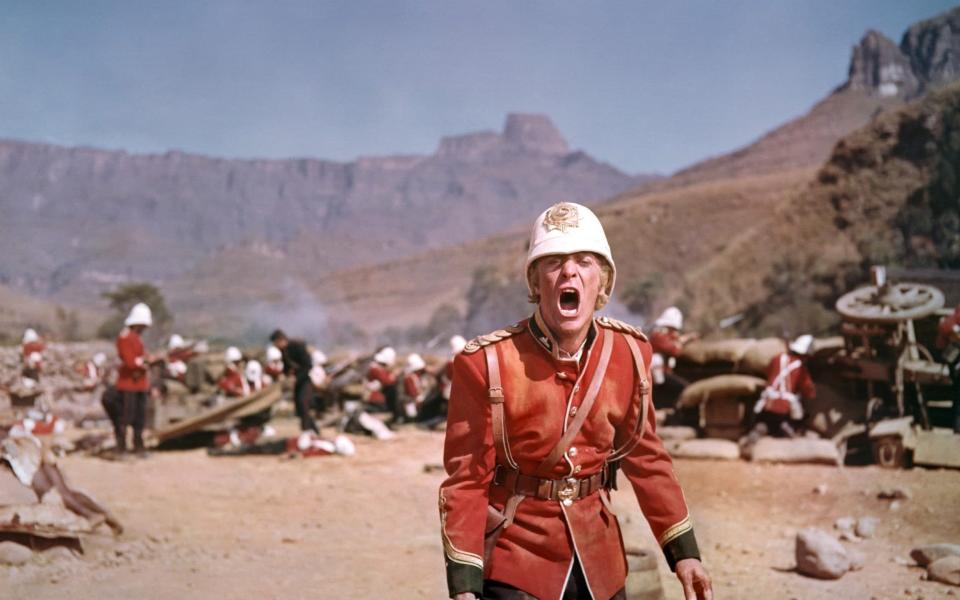
No, Private Hook (played by James Booth) wasn’t a drunken scally and, as Saul says, “B-company was not dominated by Welshman liable to break into a rendition of Men of Harlech.” But the sequence of events is mostly correct. Even the Zulus “horns of buffalo” tactic to surround the mission was a real Zulu battle formation.
Saul gives particular credit to the depiction of the Zulus’ attack on the hospital. “The real heart of the film is the heroism in the hospital,” he says.
But there’s a crucial detail left out: the real Bromhead and Chard (played by Caine and Baker) wanted to do a runner. “One of the NCOs was the real hero in many ways,” says Saul. “He said, ‘If we leave they’ll catch up… we may as well stay and fight.’ But from that point on the film’s pretty accurate!”
1. Tora! Tora! Tora! – Attack on Pearl Harbor (December 7, 1941)
The history: Japan’s surprise air strike on the US naval base in Oahu, Hawaii. The attack sank or damaged 18 warships, destroyed 188 aircraft, and killed 2,403 US service people.
The movie: Another epic ensemble (but with fewer name stars) that sets out to faithfully depict the real events. And best of the lot.
Battlefield report: The story is told from both perspectives, with both American and Japanese directors, and technical advisors brought in from both sides to recreate the events – including Minoru Genda, who helped mastermind the real attack.
Military pedants will notice some inaccuracies – American T-6s stand in for Japanese Zeros, for instance – but it packs in literally explosive stunts and depicts the attack as it happened: bombs targeted battleships and parked aircraft, the devastation of the USS Arizona, and the heroic American pilots who took to the skies to shoot down Japanese planes.
“It’s a very historically accurate film,” says Nick Hodges from History Buffs. “The fact some of the stunt people almost died filming these crazy stunts shows how they tried to make it as realistic as possible.”
It also gets extra points for not being Michael Bay’s Pearl Harbor.

 Yahoo News
Yahoo News 
